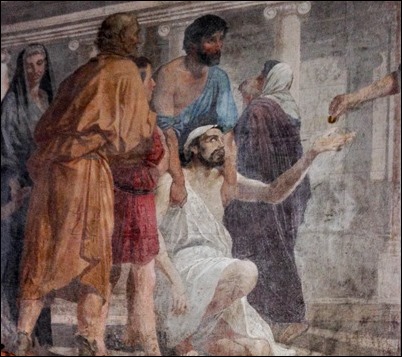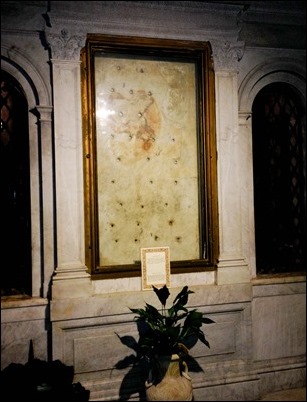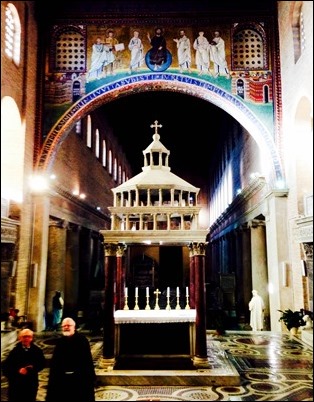Hello and welcome,
I want to begin this week sharing with you a statement that I issued Thursday that have asked to be read at all Masses held within the Archdiocese of Boston this weekend:
There are times when words fail us — when they do not capture the depth of overwhelming situations we sometimes face in life. For the Church in the United States this is one of those times.
The Pennsylvania Grand Jury’s report and the first-hand expressions of horror and devastating pain experienced by survivors once again wrench our hearts with the unimaginable that tragically is all too real for those who carry this pain. Once again we hear each excruciating word they share. We remain shamed by these egregious failures to protect children and those who are vulnerable and affirm our commitment that these failures will never be repeated.
While many perpetrators have been held accountable in one way or another for their crimes, we have yet to establish clear and transparent systems of accountability and consequence for Church leadership whose failures have allowed these crimes to occur. The Church must embrace spiritual conversion and demand legal transparency and pastoral accountability for all who carry out its mission. This transformation is not easily achieved, but in all aspects it is imperative. The way we prepare priests, the way we exercise pastoral leadership and the way we cooperate with civil authorities; all these have to be consistently better than has been the case.
As I have stated previously, there are immediate actions that we can and must take. The clock is ticking for all of us in Church leadership, Catholics have lost patience with us and civil society has lost confidence in us. But I am not without hope and do not succumb to despondent acceptance that our failures cannot be corrected. As the Church we have the responsibility to help people not to lose hope, that was Jesus’ message to all those he ministered to, especially in times of great trial. There is too much good in the Church and in our faith to lose hope. Often it is survivors who courageously teach us we cannot lose hope.
Although “zero tolerance” of sexual abuse has been declared and pursued and programs of advocacy and protection of children have been adopted in dioceses throughout country, the memory, the record, the burden carried by survivors and every other fact of sexual abuse stay with the Church. We can never become complacent, this is a life-long ongoing work that demands the highest levels of our constant awareness and attention.
The crisis we face is the product of clerical sins and clerical failures. As a Church, the conversion, transparency and accountability we need is only possible with the significant involvement and leadership of lay men and women in our Church, individuals who can bring their competence, experience and skills to the task we face. We need the help of the laity to address this scourge on our people and Church. If the Church proceeds with deep recognition of these realities the future can hold the opportunity to earn back trust, confidence and support from the community of Catholics and our society. We must proceed quickly and with purpose; there is no time to waste.
To survivors in the Archdiocese of Boston who struggle to process their pain and whose wounds are opened especially wide with the reports from Pennsylvania, please know that Vivian Soper, Director of the Archdiocese’s Office of Pastoral Support and Child Protection and her colleagues stand ready to provide assistance, We encourage you to contact Vivian at 617-746-5985. To the survivors and their loved ones, we must again apologize and ask forgiveness. While much has been accomplished in the protection of children with the participation of the laity, there remains much more to be done. We are committed to the fulfillment of this responsibility as a continuing priority for the work of the Church.
I was also very encouraged that the Holy See issued the following statement yesterday:
Regarding the report made public in Pennsylvania this week, there are two words that can express the feelings faced with these horrible crimes: shame and sorrow. The Holy See treats with great seriousness the work of the Investigating Grand Jury of Pennsylvania and the lengthy Interim Report it has produced. The Holy See condemns unequivocally the sexual abuse of minors.
The abuses described in the report are criminal and morally reprehensible. Those acts were betrayals of trust that robbed survivors of their dignity and their faith. The Church must learn hard lessons from its past, and there should be accountability for both abusers and those who permitted abuse to occur.
Most of the discussion in the report concerns abuses before the early 2000s. By finding almost no cases after 2002, the Grand Jury’s conclusions are consistent with previous studies showing that Catholic Church reforms in the United States drastically reduced the incidence of clergy child abuse. The Holy See encourages continued reform and vigilance at all levels of the Catholic Church, to help ensure the protection of minors and vulnerable adults from harm. The Holy See also wants to underscore the need to comply with the civil law, including mandatory child abuse reporting requirements.
The Holy Father understands well how much these crimes can shake the faith and the spirit of believers and reiterates the call to make every effort to create a safe environment for minors and vulnerable adults in the Church and in all of society.
Victims should know that the Pope is on their side. Those who have suffered are his priority, and the Church wants to listen to them to root out this tragic horror that destroys the lives of the innocent.
On Sunday, I went to St. Patrick’s Parish in Roxbury for a celebration with the Cape Verdean community in the parish, which was one of our first Cape Verdean communities in the Archdiocese of Boston. The Mass was held because we had just celebrated one of the major feast days for the Cape Verdean community — the Feast of St. Lawrence Martyr, who is the patron of the island of Fogo in Cape Verde.
In the 1970s, Cardinal Medeiros invited the Capuchins from the Torino province in Italy who were working in Cape Verde to work with Cape Verdean immigrants in the United States. Among the friars who came here was the famous Padre Pio Gottin who worked with the Cape Verdean community in Roxbury, as well as New Bedford and Brockton. Padre Pio is the founder of the community of sisters, the Franciscan Sisters of the Immaculate Conception, and some of the sisters also came with him to St. Patrick’s. He passed away in 1999 but is still very fondly remembered.
So, the Capuchins have been working with the community for many years and, in fact, two Capuchins have arrived recently, Father Bernardino and Father Samuel, who will be working with the Cape Verdeans in St. Peter’s Parish. Father John Currie is the pastor of these two communities and we are very happy that he was there with us along with Father Jack Ahern, the outgoing pastor who will be going to St. Gregory’s Parish in Dorchester.
So, the Mass was also an opportunity for me to thank Father Ahern for his work and welcome Father Currie as well as the Capuchins who have arrived to help in the Cape Verdean ministry.
The Mass also marked the 25th anniversary of St. Lawrence Association of the Cape Verdean community, which besides organizing the feast also conducts many works of charity and social justice following in the tradition of St. Lawrence.
St. Lawrence is one of the early Roman martyrs. He was born in Spain, perhaps in Valencia, which was then a province of the Roman Empire. He ended up in Rome, and the pope made him the Archdeacon for the Diocese of Rome, which meant he was responsible for the administration of the material goods of the diocese and for distributing alms to the poor.
During that time, there was a rule that the goods of any Christian who was executed were to be confiscated. So when, during a persecution by Emperor Valerian, Pope Sixtus II was executed in 258, they came to St. Lawrence to demand that he turn over all the material goods of the Christian community to the Emperor. 
St. Lawrence immediately went out and distributed everything they had to the poor. Then, when the Emperor asked where the treasure was, he told him that the poor, the sick and the suffering were the Church’s treasure. For this, he was martyred by being burned alive on a grill.
He is buried in the Basilica of St. Lawrence, one of the oldest basilicas in Rome, which was built over the site where he was martyred. 
In the basilica, they have the grill and his relics.
On the walls of the basilica there are many paintings depicting the life of St. Lawrence. The Capuchin Friars have worked in that Basilica for many years. In fact, when I visited there in 2014, I met a friar who was a classmate of Padre Pio Gottin who had worked with the Cape Verdeans here in Boston.
So, the feast is a beautiful tradition that underscores the Church’s commitment to caring for the poor, social justice and witnessing to the faith.
After the Mass, there was a procession through the streets of Roxbury with the statue of St. Lawrence.
Until next week,
Cardinal Seán
